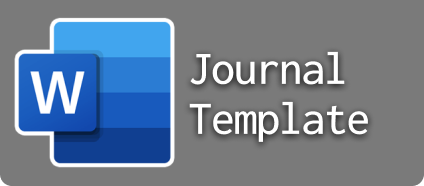STUDI PERSPEKTIF SENSORIK DAN KADAR KAFEIN KOPI KHOP BANDA ACEH
Keywords:
Kopi Khop, Kafein, Deskriptor sensorik, AcehAbstract
Kajian kandungan kafein yang berkaitan dengan cita rasa kopi unik dari Aceh, kopi Khop, masih terbatas. Studi ini bertujuan untuk menentukan hubungan antara kadar kafein dalam bubuk kopi Khop dan karakteristik sensorik dengan analisis regresi linear. Bubuk kopi Khop dipisahkan berdasarkan empat kategori: halus (fine, F), sedang (medium, M), kasar (coarse, C), dan original (O). Keempat jenis bubuk kopi tersebut diseduh dengan air panas (90 oC) lalu diuji karakteristik sensoriknya menggunakan uji organoleptik meliputi rasa asam dan pahit, aroma, warna, dan residu ampas. Sampel kopi tersebut juga diukur kadar kafeinnya menggunakan spektrometer UV-vis dan harga pH-nya. Analisis dengan regresi linear sederhana menunjukkan hubungan linear negatif antara kadar kafein bubuk F, M, dan C dengan skor deskriptor sensorik kopi Khop. Berdasarkan hasil uji tersebut, kadar kafein bukan merupakan faktor tunggal yang menentukan hasil penilaian karakter sensorik bubuk kopi Khop yang ditunjukkan dengan linearitas negatif antara kadar kafein dan skor aroma kopi.
References
Angeloni, G., Guerrini, L., Masella, P., Innocenti, M., Bellumori, M., & Parenti, A. (2019). Characterization and comparison of cold brew and cold drip coffee extraction methods. Journal of the Science of Food and Agriculture, 99(1), 391-399.
Bicho, N. C., Lidon, F. C., & Ramalho, J. C. (2013). Quality assessment of Arabica and Robusta green and roasted coffees-A review. Emirates Journal of Food and Agriculture, 945-950.
Cordoba, N., Pataquiva, L., Osorio, C., Moreno, F. L. M., & Ruiz, R. Y. (2019). Effect of grinding, extraction time and type of coffee on the physicochemical and flavour characteristics of cold brew coffee. Scientific reports, 9(1), 1-12.
Derossi, A., Ricci, I., Caporizzi, R., Fiore, A., & Severini, C. (2018). How grinding level and brewing method (Espresso, American, Turkish) could affect the antioxidant activity and bioactive compounds in a coffee cup. Journal of the Science of Food and Agriculture, 98(8), 3198-3207.
Fredholm, B. B., Yang, J., & Wang, Y. (2017). Low, but not high, dose caffeine is a readily available probe for adenosine actions. Molecular aspects of medicine, 55, 20-25.
Fuller, M. & Rao, N.Z. (2017). The effect of time, roasting temperature and grind size on caffeine and chlorogenic acid concentrations in cold brew coffe. Scientific Reports
Hečimović, I., Belščak-Cvitanović, A., Horžić, D., & Komes, D. (2011). Comparative study of polyphenols and caffeine in different coffee varieties affected by the degree of roasting. Food chemistry, 129(3), 991-1000.
Jeon, J. S., Kim, H. T., Jeong, I. H., Hong, S. R., Oh, M. S., Park, K. H., & Abd El-Aty, A. M. (2017). Determination of chlorogenic acids and caffeine in homemade brewed coffee prepared under various conditions. Journal of Chromatography B, 1064, 115-123.
Liang, N., & Kitts, D. D. (2014). Antioxidant property of coffee components: assessment of methods that define mechanisms of action. Molecules, 19(11), 19180-19208.
Meilgaard, M. C., Carr, B. T., & Civille, G. V. (1999). Sensory evaluation techniques. CRC press.
Moon, J. K., Yoo, H. S., & Shibamoto, T. (2009). Role of roasting conditions in the level of chlorogenic acid content in coffee beans: correlation with coffee acidity. Journal of agricultural and food chemistry, 57(12), 5365-5369.
Moroney, K. M., Lee, W. T., Suijver, F., & Marra, J. (2015). Modelling of coffee extraction during brewing using multiscale methods: An experimentally validated model. Chemical Engineering Science, 137, 216-234.
Olechno, E., Puścion-Jakubik, A., Zujko, M. E., & Socha, K. (2021). Influence of Various Factors on Caffeine Content in Coffee Brews. Foods, 10(6), 1208.
Poole, R. L., & Tordoff, M. G. (2017). The taste of caffeine. Journal of caffeine research, 7(2), 39-52.
Ross, C. F., Pecka, K., & Weller, K. (2006). Effect of storage conditions on the sensory quality of ground Arabica coffee. Journal of Food Quality, 29(6), 596-606.
Sabarni, S., & Nurhayati, N. (2019). Analisis kadar kafein dalam minuman kopi khop Aceh dengan metode spektroskopik. Lantanida Journal, 6(2), 141-155.
Seninde, D. R., & Chambers, E. (2020). Coffee flavor: A review. Beverages, 6(3), 44.
Severini, C., Derossi, A., Ricci, I., Fiore, A. G., & Caporizzi, R. (2017). How much caffeine in coffee cup? Effects of processing operations, extraction methods and variables. The Question of Caffeine, 45-85.
Downloads
Published
Issue
Section
License
Amina Journal a uses license CC-BY SA
Amina Journal uses license CC-BY-SA or an equivalent license as the optimal license for the publication, distribution, use, and reuse of scholarly works.
This license permits anyone to compose, repair, and make derivative creation even for commercial purposes, as long as appropriate credit and proper acknowledgement to the original publication from Amina Journal is made to allow users to trace back to the original manuscript and author.
Readers are also granted full access to read and download the published manuscripts, reprint and distribute the manuscript in any medium or format.





















